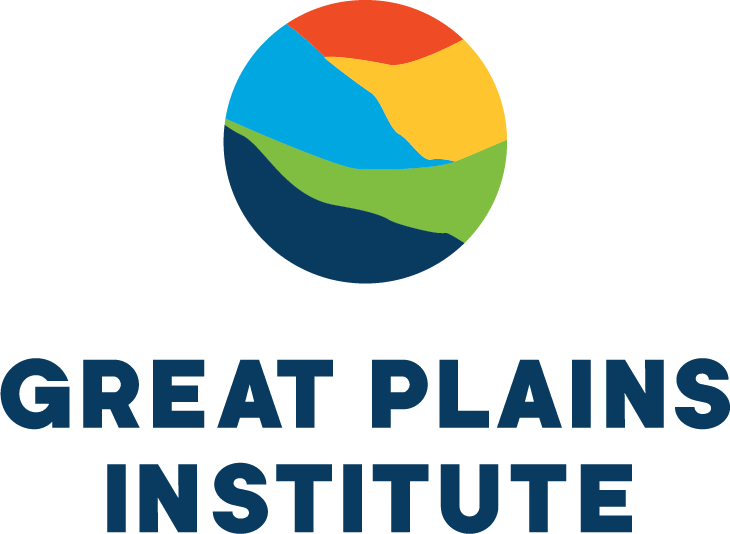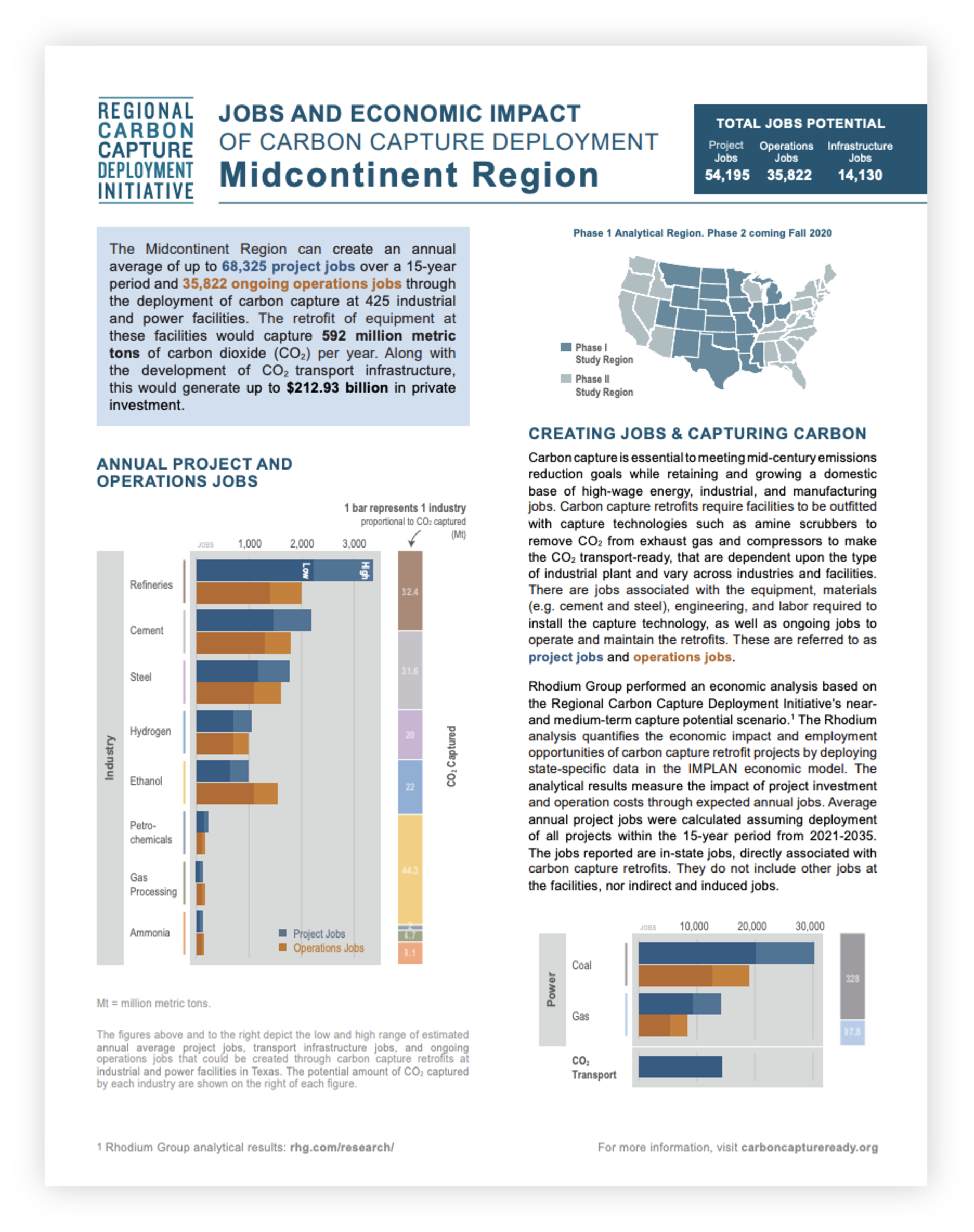Preparing the Policy, Industry, Labor, and Environmental Landscape
States are Ready for Carbon CaptureCarbon Capture and Storage Opportunities in the Mid-Atlantic
 This report builds on the results from GPI’s Transport Infrastructure for Carbon Capture and Storage to identify regional deployment opportunities in the Mid-Atlantic region of the United States. The analysis identified capture opportunities that could be deployed in the near term as well as into the midcentury and evaluates the regional transport infrastructure and saline geologic storage needed to decarbonize the energy and industrial sectors in the Mid-Atlantic.
This report builds on the results from GPI’s Transport Infrastructure for Carbon Capture and Storage to identify regional deployment opportunities in the Mid-Atlantic region of the United States. The analysis identified capture opportunities that could be deployed in the near term as well as into the midcentury and evaluates the regional transport infrastructure and saline geologic storage needed to decarbonize the energy and industrial sectors in the Mid-Atlantic.
Carbon Capture Ready
The new carbon economy is underway. We aim to help states and regions be carbon capture ready in order to realize the potential to transform economies and ensure a sustainable environment for future generations.
Carbon capture represents a singular opportunity for the United States to capitalize on the evolving low-carbon economy with benefits to jobs, energy security, and the environment across the region. Policymakers, industry, labor, and NGOs are working throughout the country to ready their regions for this technology that will drastically reduce emissions at coal, gas, cement, ethanol, and other industrial facilities. The captured carbon can then be transported where it can be put to good use in creating products or where it can be permanently and safely stored underground.
Each state has its own unique geography, economy, resources, facilities, and policy landscape and this site is a guide to the current state of play in your region. You’ll find information on facilities with the most potential for carbon capture, the state and federal policies in place or under consideration, and resources, data, and analysis to help inform policy and decision-making.
A vision for economy-wide carbon capture, storage, and transport

The Regional Carbon Capture Deployment Initiative released its analytical whitepaper in June 2020. This white paper summarizes the results of over 2 years of collaboration with multiple research institutions on modeling efforts to estimate carbon capture and storage potential throughout the United States using real-world data. For more information on the analysis, click here.

The Regional Carbon Capture Deployment Initiative
The Regional Carbon Capture Deployment Initiative is a network of 25 states, and growing, that work together to help ensure near-term deployment of carbon capture projects that will benefit domestic energy production, reduce carbon emissions, and protect and create high-wage jobs. The Initiative provides unique and valuable opportunities for governors, state officials, legislators, and stakeholders to engage at the state, regional, and national levels.
The Initiative is currently focused on modeling and planning support for project deployment, including deep financial analyses and public-private engagement around specific project opportunities it has identified. Participating state officials, stakeholders, and technical experts will also work to identify additional federal and state policy options to close cost gaps for specific carbon capture and pipeline projects that remain after accounting for the value of the federal 45Q tax credit.
The Regional Carbon Capture Deployment Initiative is staffed by the Great Plains Institute at the invitation and direction of the State Carbon Capture Work Group.
State-Specific Resources and Analysis
The Regional Carbon Capture Deployment Initiative currently focuses on the Western and Midwest regions of the US. These regions are rich with potential when it comes to industry, geologic storage, and transport infrastructure. For the regions and states listed below, you will find state-specific resources including the legislative, capture, and storage potential within states, and analyses identifying facilities that are economically-feasible candidates for capture, and future transport networks. States listed below without a link to more information will be updated soon. Please check back or contact Patrice Lahlum at the Great Plains Institute for more information: [email protected].
Current, Emerging, and Potential Policies
Momentum is building for carbon capture as evidenced by bipartisan policies at the state and federal levels. A foundational example is the FUTURE Act, the federal 45Q tax credit for projects that capture carbon from industrial facilities and power plants for geologic storage and beneficial use. The FUTURE Act was passed by Congress and signed by President Trump as part of the 2018 budget bill. This congressional action significantly elevated carbon capture on the national energy agenda and provided an essential policy driver for commercial deployment of the technology.
Go to our Resources page for the latest on current and pending legislation in Midwest and Western states, a checklist to help you build a policy based on your specific state’s needs, and more on what policies are needed to fully realize the potential of carbon capture in the US.

Contact Us
For more information on the Regional Carbon Capture Deployment Initiative and how you can join the growing effort to capitalize on this critical technology, please contact the Great Plains Institute’s Emma Thomley at [email protected].

About the Great Plains Institue
A nonpartisan, nonprofit organization, the Great Plains Institute (GPI) is transforming the energy system to benefit the economy and environment. Working across the US, GPI combines a unique consensus-building approach, expert knowledge, research and analysis, and local action to find and implement lasting solutions. Our work strengthens communities and provides greater economic opportunity through creation of higher paying jobs, expansion of the nation’s industrial base, and greater domestic energy independence while eliminating carbon emissions. Find out more at betterenergy.org.



